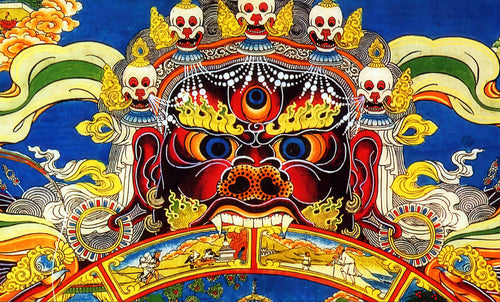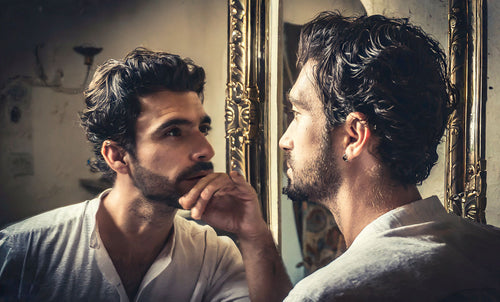
The Shadow of Homer. Interview with Paola Gabrielli
Rocco FontanaOn the occasion of the publication of the new book L'Ombra di Omero by Paola Gabrielli , we offer you an interview with the eclectic author.
Cultural Cannibals Blog - What is the meaning of the title The Shadow of Homer?
Paola Gabrielli - The Shadow of Homer, links the theme of the Shadow, where all the repressed material converges and on which we are called to look with the figure of the great poet, between legend and reality, Homer. The Iliad and the Odyssey are attributed to him, the journey that man makes, from the inside to the outside, from the house to the world. Ulysses goes to war, to Troy and, once finished, returns home after 10 years, through a long and perilous journey. From the difficulty to the peace of domestic care: like us who are called into the world, clashing with difficulties and obstacles (represented by the war and the adventures of Ulysses at sea and then returning home), that is, in our most intimate dimension: the essence. What we are, removed all the layers of onion that cover us and that make us inauthentic and masked, if not obscured. Here the therapeutic power of the mandala and creative writing comes into play.
CCB - From Art to Reality? What is Real and What is Fake?
Paola Gabrielli - There is nothing real except what we determine with our mind. We create our own destiny, with what we feel and project onto the outside. It is often an unconscious process that sinks into the SHADOW. Our task is to make ourselves aware of the process, and active in the change. Art is a means to achieve the goal, a form of catharsis.
CCB - You are known for your previous novel: “I sommersi ei salvati” , but this new book of yours is rather atypical, how did it come about?
PG - Like all my writings, it was formed over time, by successive stratification, like the walls of a house that take shape by rising in space in successive order, in time freed and made manifest to inspiration, which is volatile and instantaneous. The ideas are formed in successive order, living, and giving shape to the cathedral of words that constitutes my universe of meaning. We have a series of mandalas to color, linked to themes to reflect on, examples taken from everyday life and stories that go to bind the reflective amalgam, as a point of arrival that the reader is called to rework
CCB - In Homer's Shadow the theme of shadow recurs, can you tell us about it and what is the function of art in this case?
PG - Creative Writing works on the shape of emotions, transforming them in the passage from negative to positive; the mandala instead digs deeper, that is, it descends to a deeper level, the one that remains unconscious and that takes shape in the moment of graphic representation. The mandala has a Buddhist and Hindu, Tibetan and Indian origin, which comes to us as a form of meditation. Mandala means capturing the essence in the here and now. Often we do not have clarity about our essence, we experience moments of confusion that make us lose contact with ourselves: the mandala is like a magnifying glass: it captures what is in the unconscious and manifests it externally.
The mandala has various layers: the first, outermost, represents the world and our relationships with it; the internal frames are the different stratifications of the personality; the center represents the essential qualities that characterize us. Sometimes in life we are connected with the center and we are able to express the essential qualities. So the mandala symbolizes, or rather is, the journey of the human being: from the self to the world and from the world to the self.
How to build a mandala: from the tangle of lines you select the shape you want to make appear and that represents you. The technique does not touch the emotional sphere, but contains it, and creates distance from the emotion, so that it can be seen and perceived from an internal perspective. In fact, in the mandala you do not work on the emotion, but on the deep process that you go through while painting. Even those who arrived with strong emotions, land in the present and find tranquility, their own internal dimension: you are in meditation and the attachment to the emotion goes away.
Jung painted mandalas every day. Jung studied mandala figures for 14 years and came to the conclusion that they were archetypal structures, typical of the collective unconscious that recurred in various eras and cultures. To understand Jung's interpretation, it is necessary to refer to the concepts of collective unconscious and archetype. Jung accepts the Freudian notion of unconscious, but modifies it considerably. He recognizes the existence of an individual unconscious, which contains repressed or removed materials of infantile origin, emerging in dreams or neurosis, but specifies that it is only an aspect of the basic structure of the psyche, which in addition to containing consciousness, and the individual unconscious, also hosts the collective unconscious . Archetypes (in analytical psychology it could be defined as a universal formof thought endowed with a certain affective content for the subject), like the collective unconscious, of which they constitute the substance, present three peculiar characteristics: universality, impersonality, and heredity.
The Mandala is a very important archetype. It is the archetype of inner order and expresses the fact that there is a center and a periphery, which tries to embrace the whole. It is the symbol of totality. Therefore, during a therapy, when in the patient's psyche there is great disorder and chaos, this symbol can appear in the form of a Mandala in dreams, or in fantasies or in free drawings. The Mandala appears spontaneously as a compensatory archetype, bringing order, showing the possibility of order….»
The function of the mandala is therefore twofold: to consolidate the psychic order if it already exists, and to re-establish it if it is disrupted or even disappeared.
CCB - In your work as an educator, have you ever used literature as a means to help someone in difficulty?
PG - Literature is continuous education. A process that happens spontaneously in the classroom through reading texts, dialogue and comparison. More precisely, through creative writing and mandala painting I have helped someone in a concrete way. When you are open, miracles happen, those that we call “healings”. If we want to think of a specific text, that I find interesting and current, I would cite the essay adopted in class “La parola ai giovani” (The word to the young) , by the philosopher and sociologist Umberto Galimberti.
CCB - From which works or experiences did you draw inspiration for The Shadow of Homer? Are there works or authors that over the years have inspired you and taught you more about the complex world of human emotions?
PG - There are several works on which I have based my studies in twenty years of personal research, enriching my home collection or using the libraries of the Trentino area, always attentive and well-stocked. I could mention among the many books that of Daniel Goleman, “Social Intelligence” . The rest was provided by life, by living.
CCB - How much of your work is autobiographical?
PG - The biographical data is always present, but it is transfigured in the dimension of writing, arriving at something else, which is no longer totally mine, nor totally yours.
CCB - How does this empathic attention to reality express itself?
PG - It is a feeling that you have from birth and that can be refined over time. Being empathetic means understanding the reasons of the other, without being overwhelmed by them. Hence the necessary detachment in the professions of help and support.
CCB - Do you think that The Shadow of Homer can help make people responsible?
PG - If they want, yes. Will and power. Homer's Shadow is only the means.
CCB - Our country, famous for its culture, is also a country where most people admit not having read a book in the last year. What is the reason and what could encourage people to enjoy this type of reading?
PG - I recommend this book to everyone, especially those who have decided to take care of themselves. We live in a fast-paced world where we often don't have time to breathe. It's time to stop and think about what we want from our lives. "Our time is limited. We don't choose to live someone else's life."
CCB - In addition to your books, you offer art workshops. Can you tell us about them?
PG - I approached the mandala thanks to a person who told me about it. From here a path of approach to art as a form of awareness was born. Through the mandala I could see myself and see what was happening in the world by crossing it in the time of construction. A process of change is activated that leads to evolution. Art joined teaching by experimenting with educational workshops with the kids, creative writing and mandala painting, where I was able to see the change; sometimes difficult situations were unblocked: painful memories emerged that were dissolved and allowed to flow through the group and the guide. The kids show themselves attentive and involved when we talk about them and their souls: listening becomes active and questions arise: "But you, professor, how do you know these things?"
















































